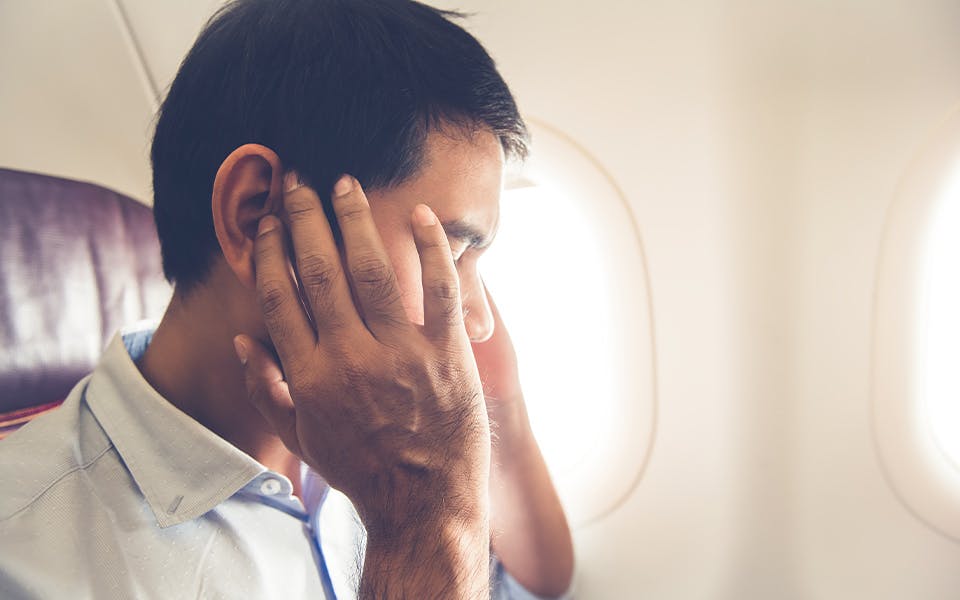Also known as ear barotrauma, airplane ear is common among airline passengers. It can occur during an airplane’s ascent or descent. It’s easily remedied but can cause severe pain in some instances.
What Causes Airplane Ear?
The air pressure in and outside your ear is roughly the same. A slow change in air pressure allows your ears time to adjust, but a rapid change can cause discomfort.
Your eardrum swells when the pressure in the inner ear is higher than that of the outside environment. That causes the eardrum to stretch. If your inner ear is less pressurized than the outside air, your eardrum will suck in like a vacuum.
Ear pressure is regulated by your Eustachian tube, a passage that connects the back of your nose to your middle ear. The Eustachian tube compresses with air pressure changes, inhibiting its ability to equalize the pressure in your ears.
Airplane Ear Symptoms
Common signs of airplane ear include:
- A sense of fullness or pressure in your ears
- Mild to moderate ear pain
- A slight, temporary loss of hearing
Severe symptoms include:
- Intense or prolonged ear pain
- Dizziness or vertigo
- Vomiting
- Bleeding from the ear
Symptoms are often exacerbated by illnesses such as a cold, the flu, allergies or nasal congestion. Children are more prone to experiencing airplane ear due to the smaller size of their Eustachian tube.
In very rare instances, airplane ear can cause your eardrums to rupture. If that happens, seek immediate medical treatment to avoid infection, which may cause permanent damage and hearing loss.
How Do I Treat Airplane Ear?
Chew gum, swallow or yawn: Those actions stimulate air movement through your Eustachian tube. The air is absorbed by the membranes in your ears and equalizes the pressure. Infants may nurse on a bottle or pacifier, and children can suck on a lollipop or candy to stimulate swallowing.
Valsalva maneuver: Fill your mouth with air, then close your lips and pinch your nostrils shut. Gently force the air out of your mouth until your feel your ears pop. That technique is not recommended if you’re sick or have allergies.
Toynbee maneuver: Close your mouth and pinch your nostrils shut. Swallow several times while you keep your airways sealed. The movement of your tongue and throat muscles will force your Eustachian tube open and ease the pressure in your ears.
Earplugs: Specially designed airplane earplugs have filters to regulate inner ear pressure during flights.
Is it Preventable?
Airplane ear isn’t preventable, but you can take steps to reduce the severity of your symptoms and discomfort. Flight anxiety and illness can contribute to the sensation of hearing loss, so you may consider alternate travel methods.
Nasal sprays and decongestant medication can regulate ear pressure and should be taken an hour before landing. After your flight, you may require another dose of a decongestant to help the pressure in your ears equalize.
Hearing Associates offers comprehensive evaluations and treatment for hearing loss, tinnitus and other auditory issues. Call 888-760-2032 or contact us online to schedule your appointment.


